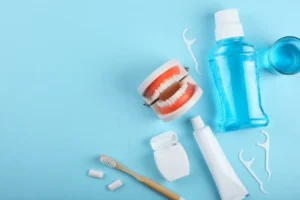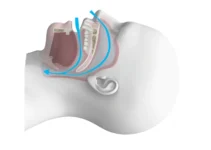Maintaining good dental hygiene is crucial for more than just a bright smile; it also impacts your overall health. Regular brushing and flossing are fundamental, but it’s also important to visit a dentist regularly for professional cleanings and check-ups. This article explores the best practices in dental hygiene, including the right way to brush, the importance of fluoride, and how diet affects oral health. Whether you’re looking to enhance your routine or address specific dental concerns, understanding the basics of dental care can lead to better health outcomes and a more confident smile.
Brushing Techniques for Effective Dental Hygiene
Maintaining excellent dental hygiene is essential for overall health, as it can prevent a multitude of oral health issues such as cavities, gum disease, and bad breath. One of the most fundamental aspects of dental care is brushing. However, it’s not just about brushing twice a day; the techniques used can significantly influence the effectiveness of your oral hygiene routine.
Developing proper brushing techniques is vital to ensure that you’re removing plaque and food particles effectively. Let’s explore some crucial aspects of brushing, including choosing the right toothbrush, understanding proper brushing methods, and knowing how often you should brush.
Choosing the Right Toothbrush
One of the first steps in ensuring effective dental hygiene is selecting the right toothbrush. According to the American Dental Association (ADA), both manual and electric toothbrushes can be effective, but the choice often depends on individual preferences and specific dental needs.
When choosing a toothbrush, consider the following factors:
- Soft bristles: Hard bristles can be abrasive and may lead to enamel erosion and gum damage. Soft bristles are gentle and effective in removing plaque.
- Size: The toothbrush head should be small enough to easily reach all areas of the mouth, including the back teeth.
- Comfort: The handle should be comfortable to hold and maneuver, ensuring you can reach all areas without straining.
Electric toothbrushes can be particularly beneficial for those with limited manual dexterity or those who simply prefer a more automated brushing experience. Studies have shown that electric toothbrushes with oscillating-rotating technology can be more effective in reducing plaque and gingivitis compared to manual toothbrushes.
Proper Brushing Methods
Once you’ve chosen the right toothbrush, the next step is to ensure you’re using the correct brushing technique. Proper brushing methods can make a significant difference in the health of your teeth and gums.
Here are steps to follow for an effective brushing technique:
- Hold your toothbrush at a 45-degree angle to your gums. This angle allows the bristles to reach and clean the gum line effectively.
- Use gentle, circular motions. Avoid using a back-and-forth scrubbing motion, as this can damage the enamel and irritate the gums.
- Brush for at least two minutes. Ensure you spend enough time to clean all surfaces of your teeth, including the outer, inner, and chewing surfaces.
- Don’t forget your tongue. Brushing your tongue can help remove bacteria and freshen your breath.
It’s also essential to use a fluoride toothpaste, as fluoride helps to strengthen tooth enamel and prevent decay. Remember to rinse your toothbrush thoroughly after each use and replace it every three to four months or sooner if the bristles are frayed.
How Often Should You Brush?
The frequency of brushing is a common question, and dental professionals generally recommend brushing your teeth at least twice a day—once in the morning and once before bed. Brushing twice daily helps to remove plaque buildup and prevent bacterial growth that occurs overnight.
For optimum dental health, consider the following tips:
- Brush after meals: If possible, brushing after each meal can help to remove food particles and reduce the risk of plaque formation.
- Wait after eating acidic foods: If you’ve consumed acidic foods or drinks, it’s best to wait at least 30 minutes before brushing to prevent enamel erosion.
- Use mouthwash: In addition to brushing, using an antimicrobial mouthwash can help to reduce bacteria and keep your breath fresh.
While brushing twice a day is the standard recommendation, individual needs may vary. Consult with your dental professional to determine the best brushing schedule for your specific oral health needs. By understanding and implementing proper brushing techniques, you can significantly enhance your dental hygiene and overall health. For more in-depth articles on dental care and other related topics, be sure to check out our other informative articles!
The Importance of Flossing
Flossing is an often neglected but essential part of oral hygiene. While brushing removes plaque and food particles from the surfaces of your teeth, flossing reaches areas that your toothbrush cannot. Numerous studies have shown that regular flossing significantly reduces the risk of gum disease and tooth decay. By incorporating flossing into your daily routine, you can maintain healthier teeth and gums.
In addition to preventing decay and gum disease, flossing can also eliminate bad breath. Food particles trapped between teeth serve as food for bacteria, which produce sulfur compounds responsible for foul odors. Flossing removes these particles and helps prevent bad breath.
Understanding the importance of flossing is the first step toward better oral health. In the following sections, we’ll delve into why flossing is essential, the correct techniques for flossing, and the different types of dental floss available.
Why Flossing is Essential
Flossing plays a crucial role in maintaining oral hygiene by removing plaque and food debris that accumulate between teeth and along the gum line. According to the American Dental Association (ADA), flossing helps prevent the build-up of plaque, which can lead to gum disease, tooth decay, and even tooth loss if left untreated.
Moreover, research indicates that individuals who floss regularly are less likely to suffer from chronic gingivitis and periodontitis. These conditions are linked to systemic health issues such as cardiovascular disease and diabetes. Therefore, flossing not only benefits your oral health but also contributes to your overall well-being.
Correct Flossing Techniques
Mastering the correct flossing technique is essential for achieving the best results. Start by using a piece of floss approximately 18 inches long. Wind it around your middle fingers, leaving a few inches of floss to work with.
Hold the floss tightly between your thumbs and forefingers and guide it between your teeth using a gentle rubbing motion. When the floss reaches the gum line, curve it into a C shape against one tooth. Gently slide it into the space between the gum and the tooth, and then move the floss up and down. Repeat this process for each tooth, using a clean section of floss each time.
Practicing proper flossing techniques ensures that you remove the maximum amount of plaque and food debris without causing harm to your gums or teeth. If you’re unsure whether you’re flossing correctly, ask your dentist or dental hygienist for a demonstration during your next visit.
Types of Dental Floss
There are several types of dental floss available, each designed to meet different needs. Traditional nylon floss, also known as multifilament floss, is the most common type and comes in both waxed and unwaxed forms. Waxed floss slides more easily between teeth, while unwaxed floss offers a slightly better grip.
For those with tightly spaced teeth, PTFE floss, also known as monofilament floss, is an excellent option. It is more durable than nylon floss and is less likely to shred or break during use. Some people prefer dental tape, which is broader and flatter than traditional floss, making it easier to use for individuals with larger gaps between their teeth. Water flossers, also known as oral irrigators, are another alternative. They use a stream of water to remove plaque and food particles from between teeth and below the gum line. While not a direct replacement for traditional floss, they can be a useful addition for individuals with braces, dental implants, or sensitive gums.
Choosing the right type of dental floss can make your flossing routine more effective and enjoyable. Experiment with different options to find the one that best suits your needs.
For more insights into oral hygiene and dental care, be sure to check out our other articles.
Diet and Dental Health
Maintaining good dental health goes beyond brushing and flossing; it requires a well-balanced diet rich in essential nutrients. Research has shown that a diet low in sugars and rich in vitamins and minerals can significantly reduce the risk of dental diseases. Understanding the relationship between diet and dental health can help you make informed choices to protect your teeth and gums.
Nutrients like calcium, phosphates, and vitamins D and C play a crucial role in maintaining strong teeth and healthy gums. A deficiency in these nutrients can lead to various dental issues, from cavities to gum disease. Therefore, incorporating a nutrient-dense diet is essential for maintaining optimal oral health.
Foods that Promote Healthy Teeth
Several foods are incredibly beneficial for dental health due to their nutrient content and the way they interact with the teeth and gums. Dairy products like milk, cheese, and yogurt are rich in calcium and phosphates, which help in the remineralization of tooth enamel. The protein casein in dairy products also neutralizes acids produced by bacteria, reducing the risk of decay.
Fruits and vegetables, particularly those that are crunchy, such as apples, carrots, and celery, can act as natural toothbrushes. Their fibrous texture helps clean the teeth and stimulate the gums. Additionally, these foods are high in water content, which helps to dilute sugars and stimulate saliva production, a natural defense against cavities.
Leafy greens like spinach and kale are packed with essential vitamins and minerals, including calcium and folic acid, which contribute to oral health. Nuts and seeds, such as almonds and sesame seeds, are also great options as they contain natural oils that can help protect the enamel and provide essential nutrients for overall health.
Foods to Avoid for Better Dental Hygiene
While some foods promote healthy teeth, others can be detrimental to your dental hygiene. Sugary snacks and drinks are among the top offenders. Bacteria in the mouth feed on sugar, producing acids that erode tooth enamel and lead to cavities. It’s best to limit consumption of candy, soda, and sweets to maintain healthy teeth.
Acidic foods and beverages, such as citrus fruits, tomatoes, and wine, can also pose risks to dental health. The acids can wear down the enamel, making teeth more susceptible to decay. If consumed, it’s advisable to rinse your mouth with water afterward to neutralize the acids.
Starchy foods like bread, pasta, and potato chips can also harm your teeth. These foods tend to get stuck in the crevices of your teeth and break down into sugars, providing a feast for decay-causing bacteria. Opting for whole grains and rinsing your mouth after eating can mitigate some of these effects.
Lastly, beware of sticky foods such as dried fruits and caramel. They cling to your teeth and are challenging to remove, providing a prolonged food source for bacteria. It’s crucial to brush and floss thoroughly if you consume these types of foods to prevent plaque buildup and cavities.
For more tips and insights on maintaining your dental health, be sure to explore our other articles. Knowledge is power when it comes to preserving your beautiful smile!
Regular Dental Checkups
Maintaining oral health is not only crucial for your smile but also for your overall well-being. Regular dental checkups play a vital role in preventing complications like tooth decay, gum disease, and even systemic issues linked to poor oral health. The American Dental Association recommends that everyone, regardless of age, should visit their dentist regularly for comprehensive oral evaluations and cleanings.
During these visits, your dentist can identify early signs of potential problems, making preventive care much more effective. Catching issues early not only saves you from discomfort but also reduces the financial burden of more extensive treatments down the line. Beyond just keeping your teeth clean, dental checkups help in maintaining a strong foundation for a healthy life.
How Often to See Your Dentist
The frequency of your dental visits can depend on several factors, including your oral health status, age, and any underlying health conditions. Generally, it is recommended to visit the dentist at least twice a year for routine checkups and cleanings. However, some individuals might need to see their dentist more frequently. For instance:
- People with a high risk of dental diseases (e.g., smokers, diabetics) might need to see their dentist every three to four months.
- Individuals with a history of oral diseases, such as periodontal disease, may also benefit from more frequent visits.
- Children might require more frequent visits to monitor the development of their teeth and to apply preventive treatments like sealants and fluoride.
Your dentist will provide personalized recommendations based on a thorough assessment of your oral health. Consistency is key, as regular checkups help track changes and keep potential issues in check before they escalate into serious problems.
What to Expect During a Dental Visit
A typical dental visit involves several steps designed to give you a thorough assessment and cleaning. Initially, your dental hygienist will perform a professional cleaning to remove plaque and tartar buildup. This is followed by polishing your teeth to remove surface stains, leaving your smile bright and clean.
After the cleaning, your dentist will conduct a comprehensive examination of your mouth, checking for signs of cavities, gum disease, and other oral health issues. This exam often includes:
- X-rays: These provide images of the teeth, bones, and soft tissues, helping to identify issues that are not visible during a standard exam.
- Oral Cancer Screening: Your dentist will examine your mouth for any signs of cancerous or precancerous conditions.
- Periodontal Examination: This involves checking the health of your gums and the bone structure around your teeth.
Finally, your dentist will discuss any findings and recommend a treatment plan if necessary. This may include advice on improving your home care routine or scheduling follow-up treatments. Don’t hesitate to ask questions and address any concerns you might have.
For more insights on maintaining optimal oral health, be sure to explore other articles covering various aspects of dental care and treatments. Stay informed and keep your smile healthy!
Effective Dental Hygiene Practices
If you’re looking to bolster your dental hygiene routine to maintain a vibrant and healthy smile, you might find yourself asking about the most effective strategies. Let’s explore a common question related to improving dental hygiene.
What are the best daily practices to improve my dental hygiene?
For optimal dental health, it’s essential to brush your teeth at least twice a day with fluoride toothpaste, especially after meals. Flossing daily is crucial to remove plaque and food particles between your teeth where a toothbrush can’t reach. Additionally, incorporating an antimicrobial mouthwash can help reduce bacteria and plaque activity. Don’t forget to replace your toothbrush every three to four months, or sooner if the bristles become frayed. Consistency in these practices, along with regular dental check-ups, will significantly enhance your dental hygiene.

My name is Salman Kapa, a 73-year-old expert in bone regeneration and dental implantology. With decades of experience in the field, I am dedicated to advancing our understanding of oral health and hygiene. Through my research and writing, I aim to contribute to the development of innovative solutions in dental care.




